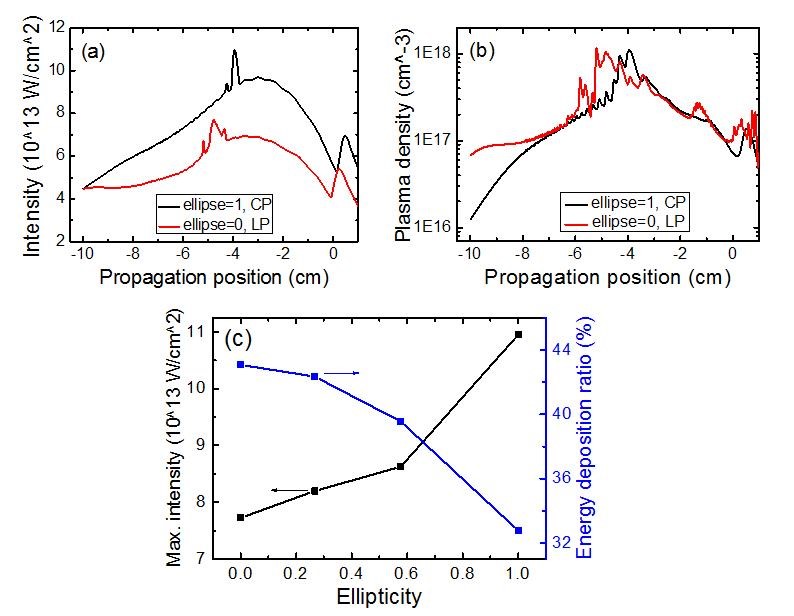The Coherent supercontinuum (SC) light has advanced many applications, for instance, in ultrafast laser pulse generation and compression, extremely high-precision optical frequency and time metrology, and ultrafast laser spectroscopy and imaging. Comparing with SC generated from bulk materials and photonic crystal fibers, SC from ultrafast laser filamentation in gases is immune from the materials’ damage for high energy SC scaling. The initial laser polarization is an important parameter for the generation of SC through filamentation. However, the available experimental observation results and the mechanisms behind are still in debates.
Recently, researchers from Shanghai Institute of Optics and Fine Mechanics of the Chinese Academy of Sciences (CAS) has made new progress on the control of SC generation via femtosecond laser filamentation in air by manipulating filamenting laser ellipticity. The results were published in Optics Letters.
In their experiment, by tuning filamenting laser ellipticity from linear polarization to circular polarization, the spectral intensity of the SC after filamentation was found to gradually increase, while the spectral bandwidth of the SC continuously decreases. The laser ellipticity-dependent spectral intensity modulation of the SC is stronger at higher filamenting pulse energy. Laser energy deposits more in linearly polarized laser filaments than in circularly polarized laser filaments. The main elements contributing to the observed phenomena are the ellipticity dependences of the nonlinear coefficient, the plasma density, and the clamped intensity.
When the laser polarization is tuned from LP to CP, the clamped laser intensity increases, and less energy is deposited during filamentation, leading to a stronger SC. Both Kerr and plasma-based SPM contribute to the spectral broadening of the SC during filamentation. Experimental results are in agreement with numerical simulations obtained by solving the nonlinear Schr![]() dinger dinger equation.
dinger dinger equation.
The results presented not only are useful for further understanding the SC generation by femtosecond laser filamentation in air, but also provide a technique for SC control.
The study was supported by the Strategic Priority Research Program of CAS and the International Partnership Program of CAS.


Figure 2: Numerical simulations results. (Image by SIOM)
Article website:
https://www.osapublishing.org/ol/abstract.cfm?uri=ol-45-16-4444
Contact:
Mr. Wu Xiufeng
General Administrative Office
Shanghai Institute of Optics and Fine Mechanics, CAS
Email: xfwu@siom.ac.cn